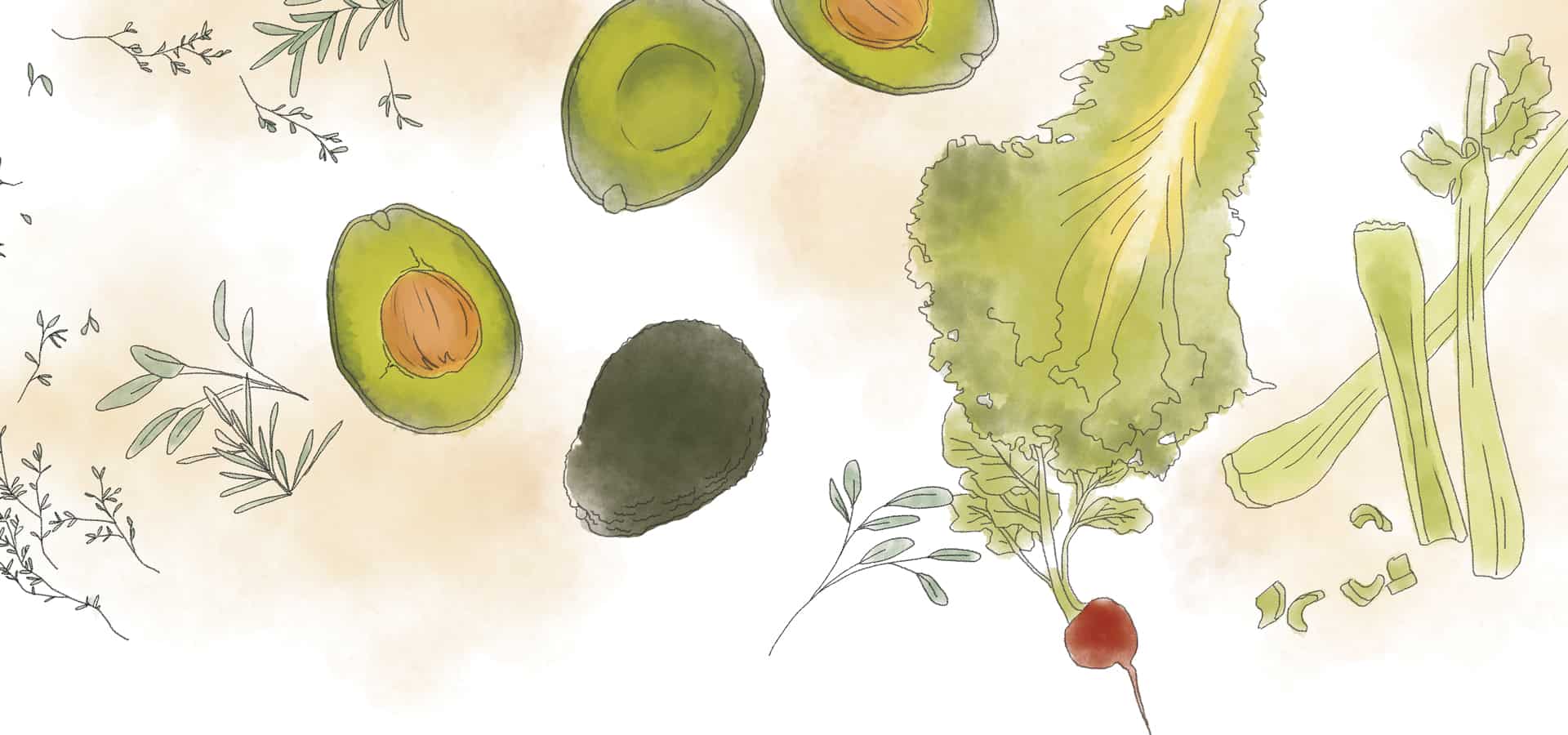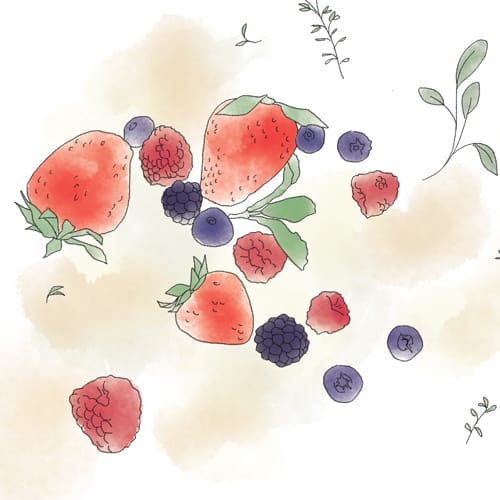
Keep your summer produce sparking all season long
Helpful tips for berries, avocados and more.
- CategoryEat & Drink
- Written byKara Mickelson
- Illustrated byChristine Georgiades
When the farmers market produce haul gives rise to a slimy green monster formerly known as lettuce … the berries look like they are sporting furry sweaters … and the organic radishes and carrots are limp as wet noodles, it’s time for a new storage strategy. Maybe you bought it at the tail end of its useful life, or it succumbed to ethylene gas, excess moisture and improper storage. Or perhaps a combination of these factors spoiled those delicate herbs and produce. To keep your summer harvests fresh and delicious, food stylist Kara Mickelson offers a few helpful tips.
Berry Basics
(strawberries, raspberries, blackberries and blueberries)
Place berries on a tray lined with paper towels. Remove any that are damaged, spoiled or over-ripe. Carefully dry extra moisture from berries by blotting or resting on paper towels.
Store the berries in a container such as Rubbermaid FreshWorks Produce Saver. Line the container with Dualplex Fruit and Veggie Life Extender Liners, and keep space between the berries to prevent cross-contamination.
Heartier blueberries can be stored in the clean and dried plastic grocery container. Just add a Dualplex sheet to the bottom. Check daily for any signs of spoilage.
Herb Saver
Herbs never seem to get used before they turn slimy, dry and shriveled or brown. Buy living herbs when possible—preferably not in plastic clamshells but in little containers. Place in a bright part of the kitchen in a shallow dish of water. When the leaves start to turn yellow or brown, replant them in the garden.
For cut herbs such as parsley, cilantro, hearty Thai or exotic basil, snip the bottom stems, remove twist ties and place stems in a glass of water. Cover tops of herbs with a sturdy unsealed ziplock bag. Place in refrigerator and refresh water daily, removing any herbs that start to yellow or brown.
For the more common sweet basil, store the same way on the counter and place in the refrigerator if it begins to wilt or if the kitchen is very hot.
For tarragon, thyme, oregano, marjoram and chives, remove from plastic containers. Discard any brown, yellow, slimy or wilted herbs. Wrap herbs with two paper towels or clean tea towels and place in individual brown lunch bags, labeled. Store in a shoebox or a small plastic utility set of drawers (found at a hobby or container store) on a refrigerator shelf. This popular restaurant trick for keeping herbs fresh is great if you have the space or more than one refrigerator.
Awesome Avocados
On the rare occasion that there is a leftover avocado half, follow this tip. First rinse the exposed half with very hot water, shake off excess water and place unwrapped and uncovered in the refrigerator on a plate. The cut portion of the avocado will turn brown and create a seal, or extra skin on the outside exposed flesh. The inside will stay fresh and green for about a day, maybe two.
Just trim or scrape the small amount of brown on the surface off and enjoy. This might just be the difference between a morning with or without avocado toast!
“Counter” Intuitive Tomatoes
Store in a cool, dry area—not in the refrigerator unless they are starting to deteriorate. Larger tomatoes can be stored stem-side down. (Not sure why but this works, but it helps them last longer.)
Small cherry tomatoes should be sorted to remove any that are overripe, as they will spoil the bunch. Shriveled tomatoes can be roasted; made into ketchup; added to side dishes, pasta and sauces; and frozen for later use in cooked recipes.
Lettuce Longevity
Battle the slimy, soggy green monsters that lurk in the crisper. Remove any damaged or discolored leaves. Wrap whole lettuce with paper towels or a clean tea towel, place in ziplock bags and then in a brown grocery or lunch bag. Store in the refrigerator but not in the crisper. For living lettuce, remove any damaged or discolored leaves. Wrap the top with paper towels and place in a brown grocery bag and into the fridge.
For prewashed mixed greens, remove any damaged leaves, add fresh paper towels on the bottom and top and place in a brown grocery bag and into the fridge. Before use, fill a salad spinner with ice-cold water. Remove stem and break down lettuce for whole heads. Trim or remove any deteriorating leaves. Plunge into icy water and drain. Fill container again. Add lettuce to the ice-cold water. Drain and spin dry.
Tops Off
Remove carrot tops, as they draw out moisture and make the carrots go limp. Wrap with paper towels and place in a ziplock bag. Store in the crisper section of the refrigerator. As the freshness peaks, roast or use for soup, stews and desserts.
Water Babies
Remove radish tops, wash, scrub and dry as much as possible. Store in container filled with water for short storage.
For longer storage, wash, scrub and dry. Place in a plastic bag with a moist paper towel. Remove air from the bag (using the straw method) and seal. Roast radishes with olive oil or brown butter and garlic as they lose their crisp texture.
Trim celery and pack in jars or plastic bags filled with water. This is a great way for a ready-to-eat snack that keeps celery crisp.
For longer storage, try the foil method. Wrap celery in foil and store in the crisper. Cook celery that is starting to soften. Add butter, garlic and Parmesan cheese or add to soup, stews and rice dishes.



























